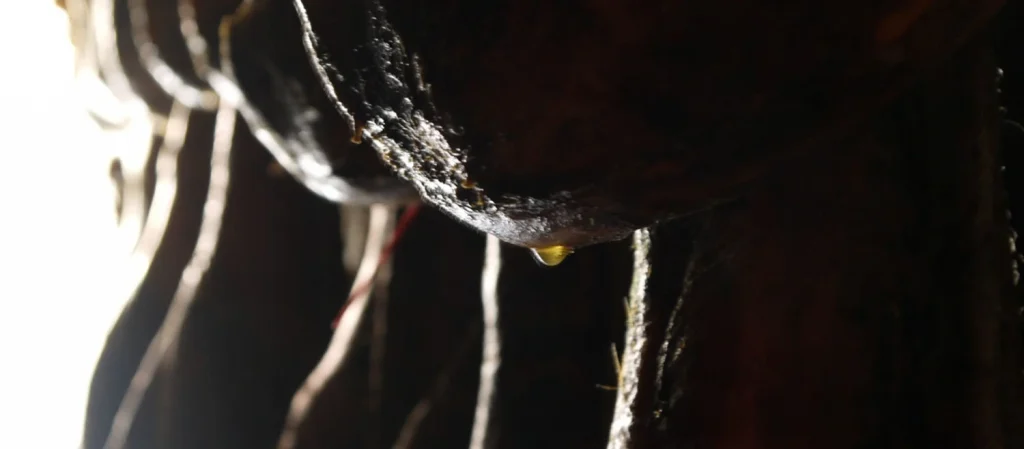As with the best wines, a ham can tell a lot about its quality and maturation process through its aroma. In order to evaluate it, the ham producers resort to an expert capable of detecting, through smell, the possible defects that the piece may have before it reaches the final consumer. When we talk about the “cala” of Iberian ham, we refer to several concepts: on the one hand, the utensil and the action of calibrating the piece to check its quality and, on the other hand, the possible defect detected through this procedure.
THE INSTRUMENT
As we have already mentioned, the instrument with which the drafting process is carried out is called “cala”. This tool is long and sharp and measures about 12 cm long. Its main characteristic is that it has to be resistant but odorless, so it is usually made of cow or horse bone or wood. It can be made in one piece or in two: the punch part and a handle to hold it.
PROCESS OF HAM FRETWORK
The cala process will allow the calador to discover the possible defects of a piece, as well as to determine the aroma, the degree of salting and the quality expected of a good Iberian ham. In other words, the purpose of a ham’s cove is twofold: to verify that the piece has no defects and to evaluate its quality.
To do this, the expert inserts the cove into the meat of the ham and drags with it all its aromas, which will give us different types of information about the piece:
– Curing point: as the curing process progresses, the pieces lose the smell of fresh meat and the aromas evolve into more intense and complex palettes, typical of the changes during the maturation process.
– Salt point: the lower the salt content in the ham, the greater the sweet smell it gives off, making it more pleasant and sophisticated.
– Feeding of the animal: an animal fed on acorns produces a ham with an intense smell, similar to hazelnuts. A good balance in the pig’s diet will be key to achieve a complex and balanced aroma, since the acorns produced by the holm oak, oak, cork oak and gall oak give different smells and their correct combination is essential.
– Elaboration process: depending on the temperature and humidity of the different cellars, the type of mold that grows on the surface of the ham is different. These molds generate characteristic odors, which are fundamental in an artisan manufacturing process and once again key to producing the best ham.
The shimming action is performed quickly and at three specific points on the leg: at the two joints of the part (hip and knee) and in the area of the femoral vein. In this way, the indentation produced when the cove is introduced into the ham does not damage the piece and heals quickly. It is very important to know the exact point where to insert the cove, how deep to do it and how to do it so that the incision is not contaminated.
Not all the pieces are not cast, it is usually a random process, especially nowadays, since the companies that produce hams and shoulders tend to have much more control over the whole process of ham production.
HAMS WITH “CALA
When we say that a ham “has a callus”, it means that there has been contamination and microbial growth in one of the sensitive points of the piece. In other words, they are pieces that are not fit to be consumed.
The origin of the cove defect may be due to problems during the cutting of the animal or to poor salting of the pieces. These deficiencies cause a problem in the early stages of production, when the meat is still sensitive. This is because the water activity and pH of the meat alone cannot naturally prevent microbial growth.
In order to prevent ham callus, it is necessary to maintain proper hygiene of utensils to avoid contamination and to perform complete bleeding at the slaughterhouse. In addition, it is essential to maintain the cold chain, especially in the early stages of curing, and to achieve the optimum salt point.
The feeding of our Iberian pigs, as well as their breeding are key to obtain a good Iberian ham, but it is also essential the know-how of our master ham makers during the curing process of the pieces. The artisan traditions of our family, combined with the latest technological advances, result in unique Iberian hams. You can enjoy the aroma of any of our jewels in different formats and at the reach of a click in our exclusive online store.
